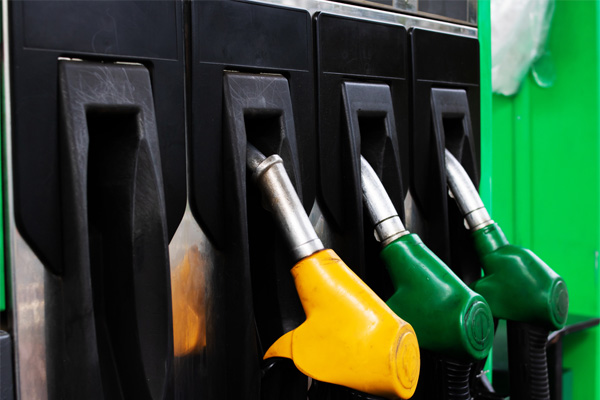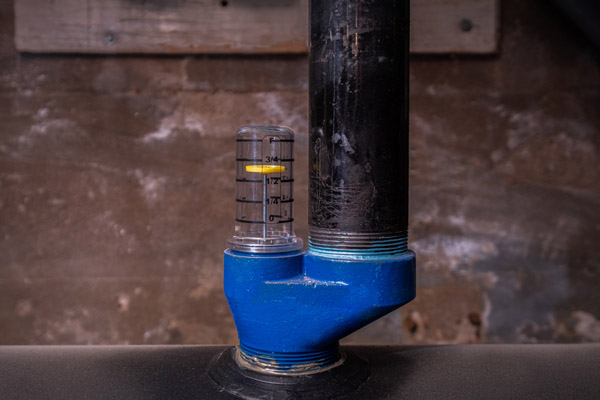
In the heart of the Greater Princeton, NJ area, we’re more than familiar with the biting cold of winter. Even those who’ve lived here for years can sometimes find themselves caught off guard by unexpected challenges that winter presents. Among the most concerning of these challenges is the potential of exhausting our home heating oil supplies. While most delivery services promise a refilling of heating oil within a mere three days, some local suppliers even boast same-day replenishing options. However, these speedy deliveries can be hampered by unpredictable factors like inclement weather and road blockages, pushing homeowners to consider other heating oil alternatives.
Given the uncertainties that winter storms introduce and the pressing need to keep our homes warm, especially with loved ones inside, sometimes waiting for a refill isn’t a feasible option. In such pressing times, diesel fuel stands out as a potential lifeline to keep your residence warm. But using diesel is more than just pouring it in; it comes with its own set of guidelines and considerations. Here’s a more detailed exploration of what homeowners should be aware of before introducing diesel to their home heating systems.
Is Diesel a Suitable Substitute for Home Heating Oil?
Contents
Imagine a chilly winter night and realizing your tank is empty. What do you do next?
Related Article: How Does An Oil Heating System Work?
Diving Deep: Understanding Your Home Heating Oil Tank

Interestingly, the taxation system makes diesel a bit pricier than its heating oil counterpart. So, before making a swift decision to switch, it’s paramount to double-check whether you’re genuinely in need of an oil alternative. How does one do this? By meticulously examining the status of their oil tank.
Most households rely on a floating gauge system to gauge the oil level in their tanks. This tool, floating atop the oil surface, provides a visual representation of the tank’s content. To ensure this gauge is functioning correctly, one should remove its shielding cover and apply a gentle downward force. If there’s still oil inside, the gauge will spring back up, indicating the oil’s presence. But if it remains in its pressed position, it’s a clear sign you’re out of oil.
Another hands-on approach to check the oil volume is by using a standard yardstick, inserting it directly into the tank’s fill tube. However, each tank is unique in size and design, meaning the refill threshold can differ. It’s always a good practice to refresh your oil supply when the tank is hovering between one-quarter and one-third of its total capacity.
If you come to the unfortunate realization that you’re out of oil, the next step is to fill up with diesel. If not, wait for any present sediment to settle at the tank’s bottom and then reignite your burner. There are instances where bleeding the system, a process of expelling trapped air, becomes necessary to restart the tank. Given the intricate nature of this task, it’s often best to entrust it to trained professionals.
Related Article: Oil Tank Condensation: What You Need To Know
The Implications of a Depleting Oil Reserve

Low oil levels carry more risks than just cold homes. System malfunctions can manifest more rapidly than most homeowners anticipate. Various reasons can lead to system shutdowns, one major one being the unwanted sediment accumulation at the base of the tank. This sediment issue is especially pertinent to tanks that haven’t received regular maintenance.
A unique feature of many tanks is their feed lines, which often stem from the tank’s top and extend downward. If these pipes don’t make it to the very bottom, there’s a real risk of running out of fuel before the tank appears completely empty. Therefore, you should employ heating oil alternatives as a better option.
Related Article: Wi-Fi Thermostats for Oil Heat
Embracing Diesel as an Interim Heating Solution: Ensuring Safe Usage
Having determined your tank’s low or depleted oil level, the next logical step might be to resort to heating oil alternatives such as diesel. Diesel, while commendable as a heating source, should primarily be viewed as a stopgap solution. There are clear reasons why traditional heating oil holds an edge.
One notable distinction is the cost. Diesel, due to its different taxation, tends to be heavier on the pocket. Moreover, diesel combustion produces more heat compared to regular heating oil. While this may seem advantageous, prolonged exposure to this excess heat can stress systems not designed for such conditions. Using modest amounts, say 5-10 gallons, of diesel daily for short durations can be a safe bet.
Your usage should align with the estimated time until your next scheduled heating oil delivery. On a typical day, a daily need shouldn’t surpass 10 gallons.
Storage demands careful attention. Diesel should be stored in distinct yellow containers and appropriately labeled. While diesel storage is safe for durations up to six months, the fuel’s quality tends to degrade over time. Additives exist to counteract this degradation, but even they have their limitations.
If, post-winter, you find yourself with excess diesel, it’s essential to follow local guidelines, which often involve disposal at recycling or hazardous waste collection centers.
Related Article: What Do Heating Oil Additives Do?
A Step-by-Step Guide to Using Diesel in Your Home Heating Oil Tank

Armed with diesel in correctly labeled yellow containers, you’re set to commence the refilling operation for using this heating oil alternative.
- System Deactivation: Ensure your entire system is powered down. The thermostat control on the tank can assist in this.
- Introducing the Diesel: Once powered down, introduce the necessary volume of diesel into the tank. Interestingly, a mix of any residual heating oil and diesel can be beneficial. It indicates that your tank wasn’t completely dry, a scenario that otherwise might require additional steps like bleeding the lines to expunge air and checking for sludge in the filter, nozzle, and pump. If these processes seem daunting, catching the issue early can spare you the effort.
- Allow Settling: Post-refilling, it’s advisable to let the tank rest for around 10 minutes, enabling impurities to naturally settle.
- System Reactivation: Having waited, it’s time to reinitiate your heating system. Your home should gradually warm up, running on diesel until a transition back to heating oil is possible.
Related Article: New Efficient Oil Heating Systems Increase Comfort & Decrease Fuel Use
Get Fast Fuel Deliveries with PFO Heating & Air Conditioning

Should you find your oil reserves alarmingly low and lack immediate alternatives, PFO Heating & Air Conditioning stands ready to assist. Committed to serving the Greater Princeton, NJ area, PFO Heating & Air Conditioning specializes in prompt emergency oil delivery solutions. This ensures that residents aren’t left in the cold for long. If you ever find yourself in such a bind, reach out to us. Our rapid delivery services, often within a 24-hour window, mean you won’t have to depend on diesel for prolonged periods.
Click here to contact us now or call us at (800) 253-9001 to find out more! Click the link to view our service area.



